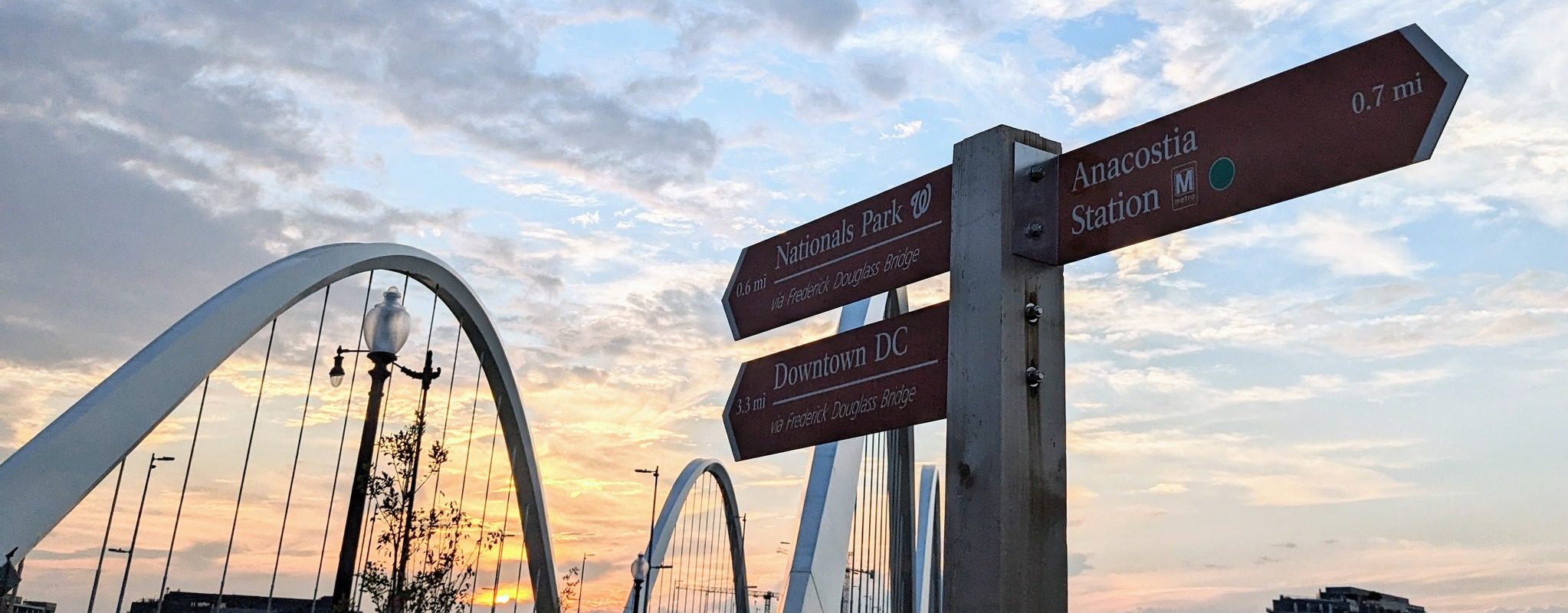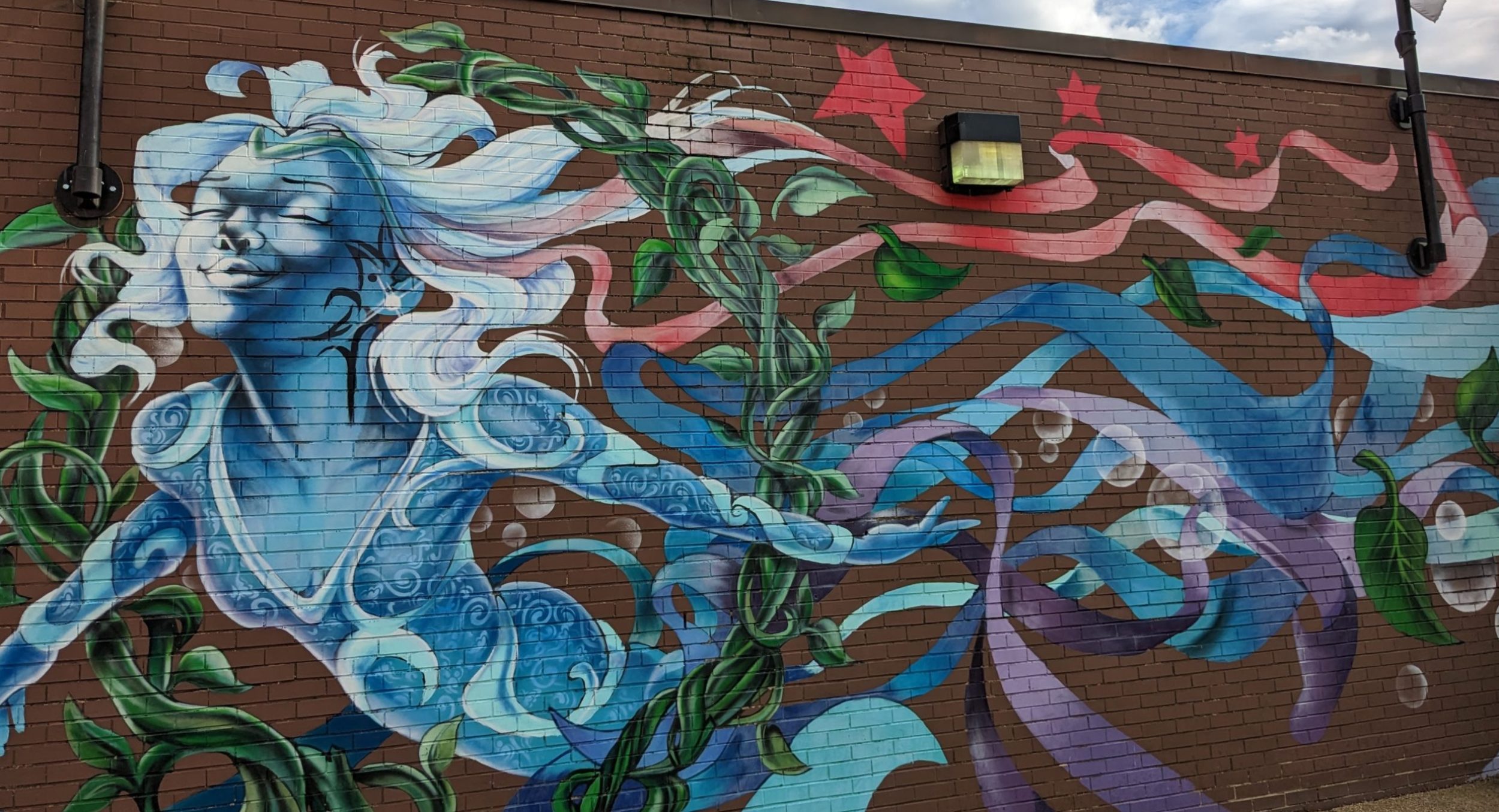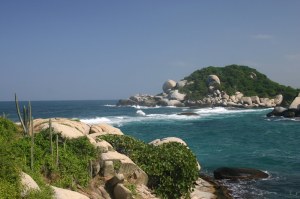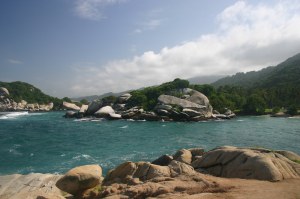 My husband David and I had a lot to be grateful for when we woke up on the top floor of the building shown here. It’s kind of a supersized wooden hut. Backpackers can rent hammocks on the first floor, while there are two private rooms, or cabanas up top. David and I got one of the cabanas and had this view from our room
My husband David and I had a lot to be grateful for when we woke up on the top floor of the building shown here. It’s kind of a supersized wooden hut. Backpackers can rent hammocks on the first floor, while there are two private rooms, or cabanas up top. David and I got one of the cabanas and had this view from our room
Parque Nacional Tayrona on Colombia’s Caribbean coast has some of the most beautiful beaches I’ve ever seen. Gorgeous warm water, good waves, granite boulders to mess with the normal sense of perspective.
We stayed in the Cabo San Juan de Guía section of the park. To get there, we took a little shuttle into the park and then walked a muddy path in the jungly hills near the sea for about 45 minutes, and then spent another 30 minutes or so walking along beautiful beaches that (sadly) have currents too dangerous for swimming.
At Cabo San Juan de Guía, there’s a little restaurant serving good fish and chicken meals, and a little shop selling soda and sundries. That’s it for any kind of commercial development. Tayrona’s a place to just chill. The only attraction beyond the beach was a friendly puppy, who will someday soon be a pretty big dog. He hung out with David and me on the beach for a while, chewing on palm fronds and a coconut. We had to divert him when he went for my sarong, Keene boat shoes and guide book. (We laughed that this was certainly not the first “Lonely Planet Colombia” he’d used in his teething.)
 There are two places where people stay overnight before going to Tayrona, the resort town of Santa Marta or backpacker haven of Taganga. Taganga sounded much prettier and since it’s firmly on the backpacker route, it would be easy to get transport directly to the park.
There are two places where people stay overnight before going to Tayrona, the resort town of Santa Marta or backpacker haven of Taganga. Taganga sounded much prettier and since it’s firmly on the backpacker route, it would be easy to get transport directly to the park.
We opted to stay in Santa Marta and see a bit more of how Colombians vacation, how they live.
We took local buses to and from Parque Nacional Tayrona. On the ride into the park, the bus driver had stacked all kinds of groceries and supplies near him, including a bale of barbed wire. On a rural road, the bus driver’s assistant jumped out and left off the bale of wire. The driver honked a few times to let the intended recipient know that his wire has arrived, and drove off.
The beach in Santa Marta was decked out for Christmas. We particularly liked this snowman, who sported the kind of brown-and-black straw hat seen often on Colombian’s Caribbean coast. A snowman needing a little shade for his carrot nose is really no more absurd than flying reindeer.
Travel tips:
–Avoid La Costena bus line for traveling from Cartagena to Santa Marta unless you’re craving the authenticityof a local bus on a crowded stretch of coast. We were told that the bus would only stop once between Cartagena and Santa Marta, and that this would be in Barranquilla. Instead, the bus stopped along the road all the way to Barranquilla to pick up and let off passengers. Yet, in Barranquilla, the only `stop’ was then our minibus, or buseta, pulled into the median of a busy road where another La Costena bus had halted with the engine running.
David and I were told to hop out here and our bags were transferred to other minibus. It made a laugh a little, like a bad corruption on a line from a song from Barranquilla’s most famous native, Shakira. “Mira, en Barranquilla, se cambie buseta asi.”






